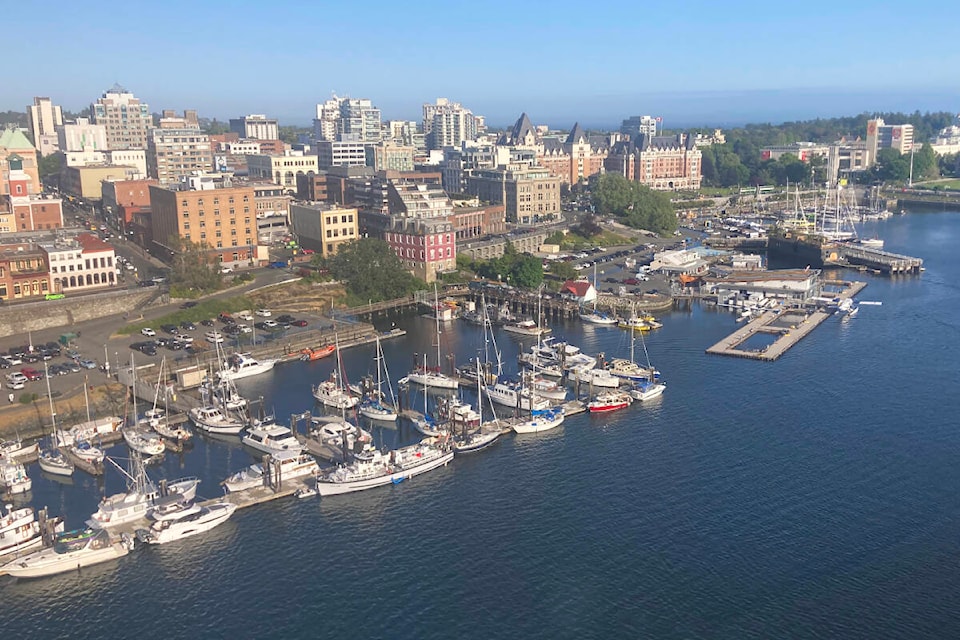Strained by increasing housing and food costs, the new living wage in Greater Victoria rose to $25.40 in 2023.
The annually calculated figure is the hourly wage that two parents, with two young children, each need to earn to cover their basic expenses, such as housing, child-care, food and transportation. The updated living wage is $1.11, or 4.6 per cent, greater than it was last year.
Housing was the largest household expense for two full-time living wage earners with children aged 4 and 7, according to a report issued on Wednesday (Nov. 8) by the Community Social Planning Council of Greater Victoria (CSPC), which calculates the annual living wage.
That necessity accounted for 37 per cent – jumping by more than $4,000 this year – of the household’s $93,490 income, while that same Greater Victoria family paid $921 more for food in 2023.
“This living wage really reflects a conversation around affordability in the region, we know it’s a challenge for some employers, they’re being squeezed by some of the same things the living wage families are being squeezed by,” said Diana Gibson, CSPC executive director.
“Employers who can pay a living wage, we certainly encourage that because this is how we build a resilient community and society. Living wage employees can go out and use their money for services that help continue to build that economic vibrancy.”
Conversation arising from the living wage also aims to bring policymakers to the table. Gibson said employers providing the wage is one solution, but government intervention is a key part of the region’s cost of living. This year’s report found the region’s living wage would’ve been $27 /hour had the federal and B.C. governments not infused funding for child care.
Policy changes will make an impact, but speakers at a Wednesday summit on the living wage also pointed to the need for culture shifts to truly make life more affordable.
One of those shifts is evident for the head of the United Way Southern Vancouver Island, which is a living wage employer and funds the annual report. Executive director Erika Stenson said there is still an expectation that non-profit employees make smaller incomes than most.
“There’s a social net in all of our communities that are held together by non-profit workers,” Stenson said. “If those people went away and they stopped doing that work, our communities would suffer greatly.”
The living wage would be $2 lower for a family of four if they didn’t have to own a car, the report found. Governments investing in the region’s “underdeveloped” transit system would help people save thousands of dollars a year by allowing them to go car-free, the report found.
Several speakers at the summit said a key solution is building transit-orientated communities where it’s easier and quicker to take the bus than drive an individual vehicle.
As food prices rise, the region faces local and global cost pressures, said Linda Geggie, executive director of the Capital Region Food and Agriculture Initiatives Roundtable. Local pressures include barriers to producing food here – like high farm prices and labour shortages – while pandemic-disrupted supply chains, war escalating wheat prices and climate change impacting yields mark global factors, Geggie said.
She criticized grocers, pointing to Loblaws’ profits eclipsing $500 million in the second quarter of this year, but also said Canadians expect food to be cheap compared to countries that spend much larger portions of their income on it.
To stem the tide of global wealth increasingly and overwhelmingly concentrating in the hands of a few small owner groups, the South Island Prosperity Partnership’s (SIPP) Dallas Gislason said a solution is keeping equity and ownership within local economies. Phillips Brewing’s model of becoming employee-owned is an example of improving affordability by keeping money local, the SIPP executive director said.
That model will become more important as Gislason said there’s $2 trillion worth of Canadian business assets belonging to owners who will retire within 10 years – with 60,000 Vancouver Island businesses facing that situation.
More employee ownership will help deter multinational private equity companies from swooping up those businesses’ wealth, but will also help communities extend the life of local shops they love, Gislason said.
Phillip MacKellar of Homes for Living said B.C. legalizing multi-unit homes in areas zoned only for single-family homes – the most expensive housing type – will help reduce costs. Such a move in Auckland, New Zealand, helped reduce rents and house prices compared to other places in that country, he said.
More emphasis on purpose-built rental will also be key, he said. Quebec has a less volatile market, MacKellar said, pointing to how the province has 70 more purpose-built rental units per 1,000 people compared to B.C.
READ: Victoria consignment store sees surge in people dumping COVID-19 clothing
